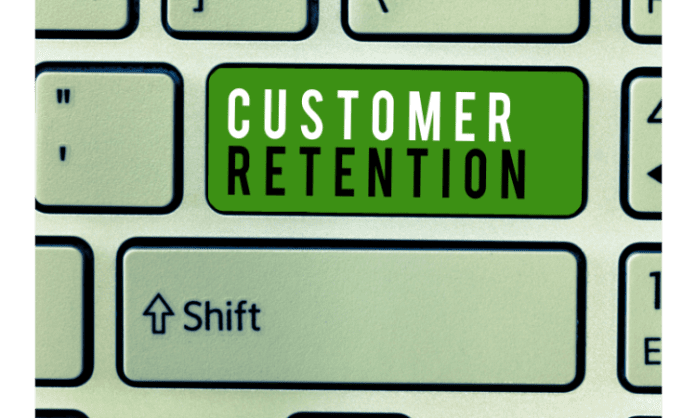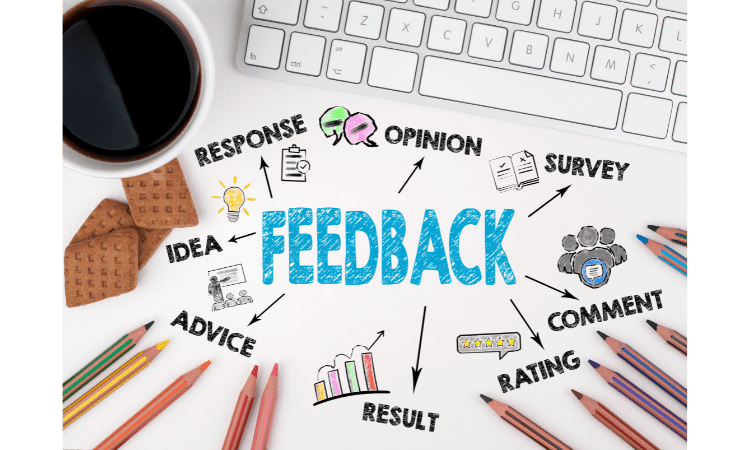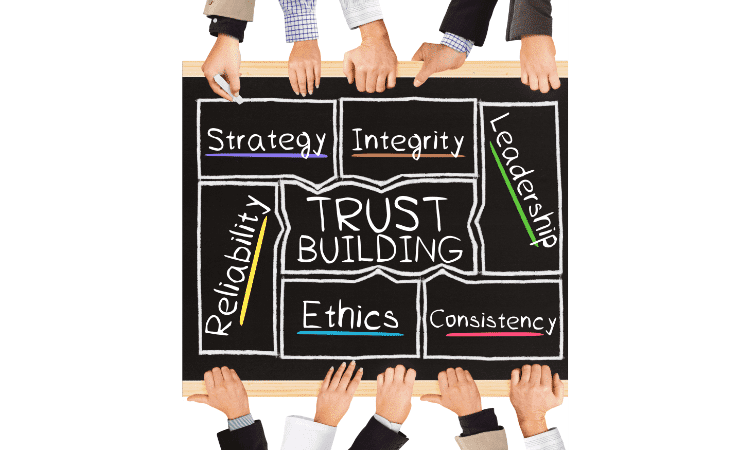
How do you keep customers coming back for more? Customer retention mitigates the need to spend time and resources on finding new customers, so it’s in your best interest to make them stick around. Here are some of the best ways you can retain your customers and how to maintain customer satisfaction.
Give your customers a reason to stay.

It might seem obvious, but it’s still worth saying: once you’ve got a customer, you want to keep them. And the more loyal they are, the better for your business. So how do you make sure that people keep coming back or what are your best customer retention strategies?
The first step is to show them that you care about their experience with your business—that’s why asking for feedback is so important! You should also make sure that everything works smoothly before and after they’ve made purchases; if something goes wrong during their interactions with your company or website, it could mean losing them as customers forever. In addition, giving people incentives like discounts or freebies every time they buy from you is another great way of making them feel valued while encouraging repeat business.
Finally, letting customers know what new products are coming out soon can help keep interest high even when there isn’t anything new in stock yet (and maybe even spark some excitement!).
Personalise marketing messages. Maintain a customer communication calendar

To personalise your marketing messages, you need to know who is receiving them. The easiest way to maintain this knowledge is by maintaining a customer communication calendar. This will allow you to:
- Keep track of when customers open and close accounts
- Identify loyal clients and show them that you value their business with special deals or rewards (such as loyalty points)
- Ensure that each message reaches the right person at the right time
- Maintain customers relationship healthy
- Keep customers happy
- keep your customers coming back
Get personal with customers when they sign up.

- Get personal with customers when they sign up.
- Ask for their contact details, and make sure you have a way to contact them (e.g., email and phone number).
- Ask for their feedback on the product or service, and be sure to follow up with it quickly so you can take any necessary action.
- This is also the best way to save customer database.
Create a customer welcome package.

Your customer welcome package should include a welcome letter, a thank you for choosing us card and a customer satisfaction survey. You will send this package within 24 hours of signing up to be received by your customers before they even have time to forget about their experience with your company.
The welcome letter is meant to let the new customer know that you are glad they chose your business and can help them get started right away. The thank you card should be personalized based on how much information you were able to gather about them during the signup process (if any).
It should come across as genuine and sincere so that it puts the customer at ease knowing they made the right decision in choosing your services over another competitor’s. Finally, include a survey so that they can give feedback on what went well during their first interactions with your team and where improvements could be made moving forward!
Get customer feedback and act on it.

Customer feedback is one of the most important tools you have to refine your business. It allows you to make sure that you’re meeting customer needs, hearing what they like and dislike, and getting an idea of where their expectations lie at any given time. It helps you to improve customer retention.
Here are a few ways to get feedback from customers:
- Ask questions! Whether it’s through email, on social media or in person, asking for input is a simple but effective way to get feedback from customers. You can ask them something as simple as “what was your favorite part of our service?” Or “what do you think we could improve?”.
- Use surveys! Surveys are great because they give customers a chance to be more specific about their answers compared to simply saying “I liked this” or “I didn’t like that”. For example: If someone gives an answer like “I loved how helpful everyone was!” instead of just saying good things about staff members (which isn’t helpful), then it’s less likely that these types of responses would lead directly into actionable items when compared with other options such as identifying specific traits about staff members who were especially friendly during interactions with other customers/clients – which could then lead directly into training sessions focused specifically on those traits
Conduct effective customer research.

To truly understand your customers, you have to engage with them in a way that will help you better serve their needs and wants. This includes asking for feedback, listening carefully to what they have to say and then taking action on the information they provide. All of this helps strengthen the relationship between you and your customers by improving the products or services that you offer them.
Build trust with your customers

Trust is the foundation of a long-lasting relationship. It’s essential to build that trust from day one, and it will take time to develop. To begin building trust with your customers:
- Be honest and open with them. Don’t try to hide anything, because transparency builds credibility faster than anything else. Customers want to know that they can trust you, so if there are problems or issues, be up front about them—don’t try to bury them in silence or pretend they don’t exist at all. This will help build loyalty among even the most fickle consumers by showing that their concerns matter enough for you to address them openly and honestly.*
- Be consistent with your message across all platforms.* When speaking personally with customers, use language that’s in line with what you say on social media channels (for example: “please” instead of “if you please”).* If someone asks a question about something related to their order or experience with your brand/company/business/product/service…do whatever it takes within reason (within budget) for them!
Educate your customers

One of the best ways to retain customers is to educate them so they can make informed decisions about how to use your product or service. For example, you could offer educational videos on YouTube or a detailed FAQ section of your website so that people can learn how to get the most out of what you offer. This will help you to retain loyal customers.
Create a branded loyalty or rewards program.

A loyalty or rewards program is a great way to both reward customers for their loyalty and keep them coming back. This can be as simple as offering a discount on the next visit, or creating an exclusive club where only members can buy certain products or services. You can also create special offers that are only available to members of your loyalty program.
Whatever you choose, remember that it’s important that customers feel like they are getting something back when they join your loyalty program: if not a discount on their next purchase then at least the feeling of being valued by your business and part of an exclusive club.
Take the time to write a handwritten thank you note to early customers.

There is no better way to demonstrate your appreciation than by writing a handwritten thank you note. Thank you notes are important, but they are even more powerful when written by hand. Receiving a personal note from the founder of a company or brand can make an impact on how our customers and prospects feel about us and our product or service. Handwritten notes are more effective because they’re more personal and memorable, which can lead to repeat business for years to come.
Offer support on the right platforms

Many businesses offer support through a variety of platforms, such as email and phone calls. However, it’s important to note that not all customers prefer the same medium for communication; some may prefer email while others might prefer texts or live chat.
The key to successful customer retention is knowing which channel will get your message across best. This means you’ll need to identify your target customers’ preferences and then tailor your approach accordingly. You should also keep in mind what kind of content they’re interested in receiving; if they want sales pitches and discounts on new products, sending them educational articles won’t do much good!
Cross-sell and upsell.

Cross-selling is when you offer a product or service that complements the customer’s purchase. For example, if someone buys a new laptop, you might suggest antivirus software or onsite tech support to help them get started with their computer.
Upselling is when you suggest a more expensive version of what they are purchasing. You can upsell any product or service that meets one of your customer’s needs, but it has to be something better than what they originally intended to buy. For example, if someone asks for basic WiFi installation at home and then decides they want faster speeds and higher security levels, then that would be an upsell opportunity because it addresses their need for speed and security in one package deal.
“Ladies like me always love new clothes!” If someone says this while buying shoes from your store then she probably wants more than just shoes because she’s not happy with her current clothing wardrobe—she needs better quality clothes! In this situation there’s an opportunity for cross-selling: “I’d recommend these pants as well because they go well with these shoes.”
Follow up after a purchase to check that your product or service has delivered what they need.

- Follow up after a purchase to check that your product or service has delivered what they need.
- Use a survey or feedback form, which can be sent via email, postal mail or posted on your website to gather the information you need and keep in touch with customers between purchases.
- Make the follow up as effective as possible by checking there is enough detail in the response so you can make improvements and identifying any opportunities for additional products that might be needed by the customer at this stage (e.g., technical support).
- If you do get feedback from a customer about something not working for them then act on it immediately – don’t ignore them! This may mean changing how things currently work in your business model but if it means keeping customers happy then it will be worth doing so! The longer you wait before acting on an issue raised by a customer then more damage will occur to their relationship with you and potentially other parts of their life too (for example if they have been recommended products/services from friends). This will also help to keep customers coming back.
Make sure you can recognise loyal clients, and show them you value their business by making sure they know how important they are to your business growth

It’s important to know who your loyal customers are, and how long they’ve been with you. You’ll want to reward their loyalty by giving them special offers and promotions.
It’s also good practice to recognize customers who have been with you for a long time, especially if they’ve made multiple purchases from you or even referred other clients in the meantime. You can do this by sending out birthday cards or gifts, as well as offering discounts on future purchases.
The last thing you want is to lose a customer because of a small mistake that could have easily been rectified by recognizing their importance in your business growth, so make sure that staff members are trained properly on how to keep everyone happy!
Conclusion
As you can see, the steps to retain customers are not rocket science. It really comes down to understanding and listening to what your customers want and need. If you understand the way to improve customer retention then you’re well on your way to building a loyal customer base who will keep coming back for more.











